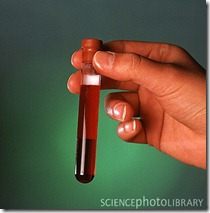 A few weeks ago the Centers for Disease Control and Prevention issued a draft recommendation that all baby boomers (those born between 1945 and 1965) take a one-time blood test to detect hepatitis C, a disease that, if left untreated, can ultimately lead to liver cancer and death.
A few weeks ago the Centers for Disease Control and Prevention issued a draft recommendation that all baby boomers (those born between 1945 and 1965) take a one-time blood test to detect hepatitis C, a disease that, if left untreated, can ultimately lead to liver cancer and death.
According to the CDC, hepatitis C deaths have been on the rise. Baby boomers already account for 2 million of the 3.2 million people infected with the blood borne virus, averaging one in every 30 people in that age group.
Many people probably don’t know they are infected because a person with hepatitis C can live without symptoms for many years, even while the disease is damaging the liver.
Over time, hepatitis C can scar the liver and lead to cirrhosis of the liver or liver cancer. The disease is the leading cause of liver transplants.
The disease is transmitted through the blood, so anyone who grew up before concerns about HIV led to more cautious handling of blood products is especially at risk.
At a recent gathering attended mostly by boomers, we discussed hepatitis C risks. Most in attendance felt they weren’t at risk because they had never engaged in intravenous drug use, the most common way the virus is spread.
Some individuals were not aware that hepatitis C could have been spread by blood transfusions that occurred before 1992, when widespread screening of blood donations began.
When I was in my 20s, I received a letter from a blood bank urging me to be tested for hepatitis C and HIV because I had received a series of blood transfusions during a childhood illness.
Fortunately the testing proved negative for both diseases, but that letter was certainly a wake-up call that most boomers don’t get.
What came as a surprise to most was that experts say hepatitis C can also be spread by receiving tattoos, piercings, manicures and pedicures, by shared razor blades and toothbrushes, and even by the childhood practice of pricking fingers and becoming “blood brothers.”
All it takes is a one-time exposure, and if it occurred decades ago a person might not even remember the event.
These kinds of experiences might not raise flags in the minds of many patients or their doctors, according to experts.
Part of the reason the CDC is recommending that all boomers be tested is that, for most, hepatitis C is a curable disease when treated early enough. With the approval last year of two new drugs used to treat hepatitis C, treatment has taken a quantum leap.
“Instead of relying on baby boomers to specifically request this test, this should become part of routine medical visits,” says Dr. Elizabeth Whelan, president of the American Council on Science and Health.
The CDC is recommending this in their preliminary guidelines, calling for a one-time testing of all people born between 1945 and 1965.
According to Dr. John Ward, director of the division of viral hepatitis at the CDC, “Getting tested could lead to an estimated 800,000 baby boomers (receiving) treatment for hepatitis C.” He estimated 120,000 lives could be saved as a result.
The new testing recommendation is expected to become final later this year.
This column is dedicated to my friend Arun, an area resident, who contracted hepatitis C. He is now bravely battling liver cancer with the support of his family and friends.
More ...
Tags: Hepatitis C,CDC